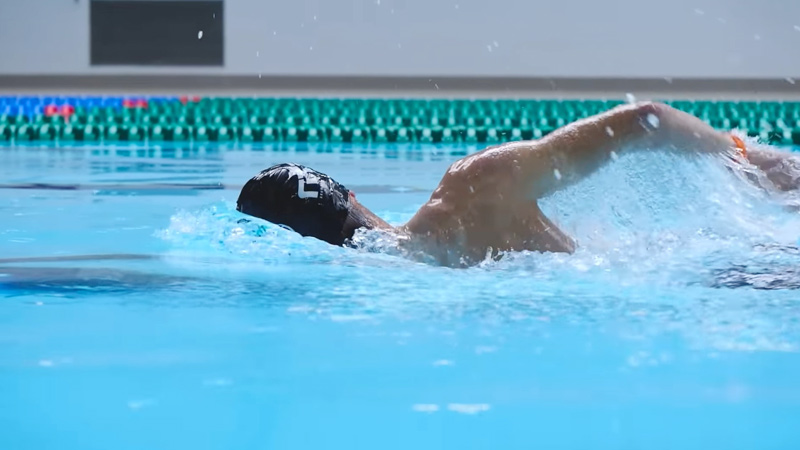The ideal water temperature for swimming is a nuanced consideration, blending individual comfort, safety, and the nature of aquatic activities.
A general consensus suggests that a range between 77-82°F (25-28°C) offers a delightful compromise for diverse swimmer preferences.
This spectrum accommodates both leisurely swims and more vigorous aquatic exercises, striking a balance between preventing discomfort from cold water and avoiding the risk of overheating.
From the therapeutic benefits of warmer temperatures to the invigorating feel of slightly cooler waters, finding the perfect balance ensures an enjoyable and safe swimming experience tailored to individual needs and preferences.
What Is a Good Water Temperature for Swimming?
A water temperature between 77-82°F (25-28°C) is generally considered ideal for a variety of swimming activities, encompassing both recreational and fitness pursuits.
This temperature range strikes a balance that caters to the preferences of many swimmers.
Here are some key points to consider when exploring the merits of swimming in water within this temperature range:
Comfortable Recreation
Water temperatures ranging between 77-82°F provide an inviting atmosphere for recreational swimmers.
This range strikes a balance, avoiding the chill of cooler waters while steering clear of the potential discomfort associated with overly warm temperatures.
Swimmers can leisurely enjoy their time in the water without the distraction of extreme temperature fluctuations.
Versatility
The versatility of this temperature range extends to a wide array of water-based activities.
From casual swims to water aerobics and socializing with friends, the 77-82°F range caters to the preferences of a broad spectrum of swimmers.
This adaptability makes it an excellent choice for community pools and recreational facilities catering to diverse audiences.
Safety and Wellness
Maintaining water temperatures between 77-82°F is conducive to both safety and wellness. It minimizes the risk of hypothermia, particularly during extended periods of water exposure.
Additionally, this range provides a comfortable environment for individuals with muscle or joint sensitivities, contributing to a safer and more enjoyable swimming experience for a broader demographic.
Year-Round Enjoyment
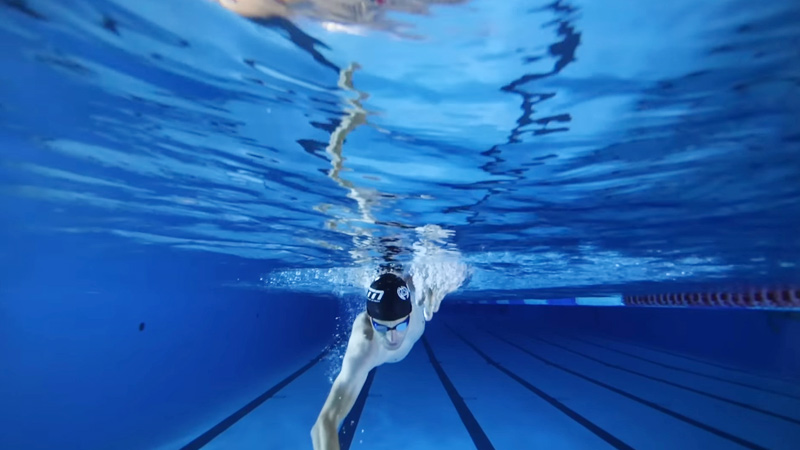
This temperature range allows for year-round enjoyment of swimming activities. Whether it’s a sunny summer day or a winter escape to an indoor pool, swimmers can expect water temperatures within the 77-82°F range to remain consistently comfortable.
This consistency enhances the appeal of swimming as a recreational and fitness activity throughout the changing seasons.
Moderate for Exercise
For those engaging in moderate to vigorous exercise in the water, the 77-82°F range strikes a balance.
It prevents the discomfort of overheating during physical activity while still providing the refreshing and invigorating feel of the water. This makes it suitable for individuals incorporating swimming into their fitness routines.
Consideration for Local Variations
While generally well-received, it’s crucial to acknowledge that individual preferences may vary.
Some swimmers might prefer a slightly cooler or warmer environment based on personal comfort and acclimatization.
Additionally, swimmers should be mindful of local regulations and facility guidelines, as these may impact the acceptable range of water temperatures in a given swimming venue.
Therapeutic Benefits
Water temperatures within the 77-82°F range offer therapeutic benefits for those seeking relief from certain physical conditions.
Whether it’s improved circulation, joint mobility, or post-injury rehabilitation, the moderate warmth of the water provides a comfortable setting for various therapeutic activities.
This makes it an attractive option for individuals incorporating swimming into their wellness and recovery routines.
What Temperature Water Is Too Cold to Swim In?
Water temperature that is too cold can pose risks to swimmers, and the definition of “too cold” varies based on individual tolerance, activity level, and exposure duration.
Generally, water temperatures below 70°F (21°C) are considered cold and can lead to discomfort and increased risk of hypothermia, especially with prolonged exposure.
Cold water can cause the body to lose heat more rapidly than it can generate, leading to potential health issues such as numbness, reduced muscle function, and impaired decision-making.
It’s crucial to consider personal tolerance, the purpose of swimming, and to be aware of safety guidelines and recommendations set by swimming facilities when determining if the water is too cold for swimming.
Is 75 Degree Water Too Cold to Swim In?
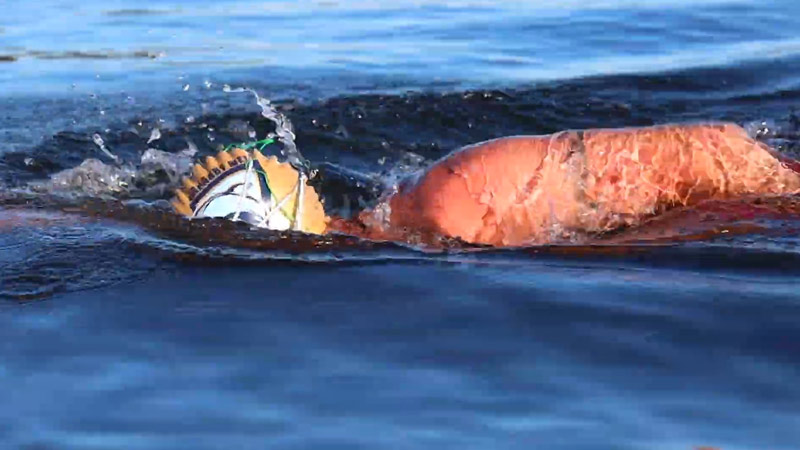
A water temperature of 75°F (24°C) is generally considered cool, and some people might find it refreshing, while others may feel it’s a bit chilly.
Whether it’s too cold to swim in depends on individual preferences, the purpose of swimming, and how acclimated a person is to cooler water temperatures.
For leisurely or recreational swimming, 75°F can be enjoyable for many individuals, especially on a warm day.
However, for those engaging in more extended periods of swimming or more vigorous activities, it may feel a bit cool, and the risk of feeling cold or experiencing discomfort could increase over time.
Always be mindful of your own comfort, and if you start feeling too cold, it’s advisable to exit the water to avoid potential issues like hypothermia.
Is 68 Degrees Too Cold to Swim? Is 68 Degree Water Cold?
A water temperature of 68°F (20°C) is considered cool, and for many people, it may feel too cold for comfortable swimming, especially for extended periods.
Here are some considerations:
Comfort Level
A water temperature of 68°F (20°C) is undoubtedly on the cooler side, and individual comfort levels can vary significantly.
Some swimmers may find it invigorating, especially on a hot day, while others may perceive it as too cold for a comfortable swimming experience.
Factors such as personal tolerance to cold, body composition, and overall health can influence how comfortable one feels in water at this temperature.
Risk of Hypothermia
Extended exposure to water at 68°F poses an increased risk of hypothermia, especially if the air temperature is also cool.
Hypothermia occurs when the body loses heat more rapidly than it can produce, potentially leading to serious health issues.
It’s crucial to be mindful of the signs of hypothermia, such as shivering, numbness, and difficulty moving, and to exit the water if these symptoms occur.
Shorter Swim Durations
While a brief swim or a quick dip might be tolerable for some individuals, maintaining comfort in the water at 68°F for an extended period can be challenging for many swimmers.
The cool temperature can lead to a rapid drop in body temperature, making it advisable to limit the duration of swimming sessions to avoid overexposure.
Consideration for Activities
The suitability of 68°F water depends on the type of swimming activity. For more vigorous exercises like lap swimming or water aerobics, warmer water is generally preferred to prevent excessive cooling of the body during physical exertion.
Swimmers engaged in such activities may find the cooler water less conducive to maintaining optimal body warmth.
Is 70 Degree Water Too Cold To Swim In?
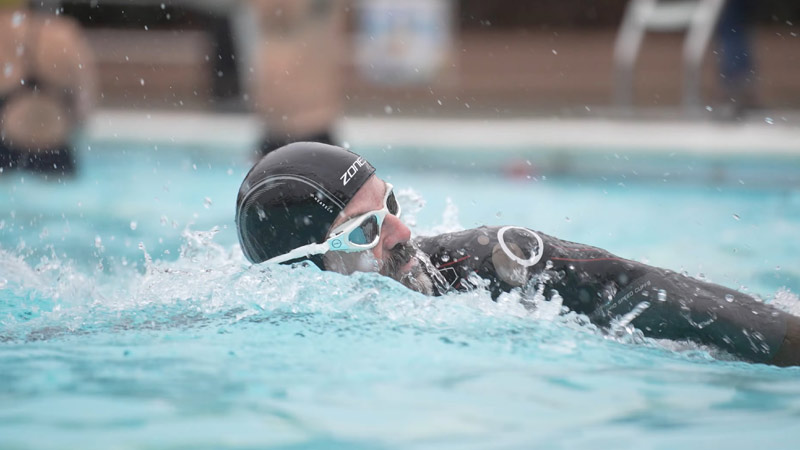
A water temperature of 70°F (21°C) is on the cooler side, and whether it’s too cold to swim in depends on individual preferences, the purpose of swimming, and one’s tolerance to cooler temperatures.
Here are some considerations:
Comfort Level
The perceived comfort of 70°F water can vary among individuals. Some people may find it refreshing, especially on a warm day, while others might consider it too cold for extended periods of swimming.
Shorter Swim Durations
While a brief swim or a quick dip may be tolerable for many individuals, maintaining comfort in the water at 70°F for an extended period might be challenging for some swimmers.
Cooler water temperatures can lead to a drop in body temperature, potentially causing discomfort or increasing the risk of feeling cold.
Purpose of Swimming
The type of swimming activity matters. For more relaxed or recreational swimming, 70°F water might be suitable for some individuals.
However, for those engaging in more strenuous activities like lap swimming or water aerobics, a slightly warmer temperature could be preferred to prevent rapid cooling of the body during exercise.
Risk of Hypothermia
While the risk of hypothermia is lower in 70°F water compared to colder temperatures, prolonged exposure can still lead to a gradual loss of body heat.
Swimmers should be aware of their own tolerance levels and be cautious not to stay in the water for an extended time, especially in cooler conditions.
Why Are Competitive Swimming Pools So Cold?
Competitive swimming pools are often kept at slightly cooler temperatures compared to recreational or leisure pools for several reasons:
Regulatory Standards
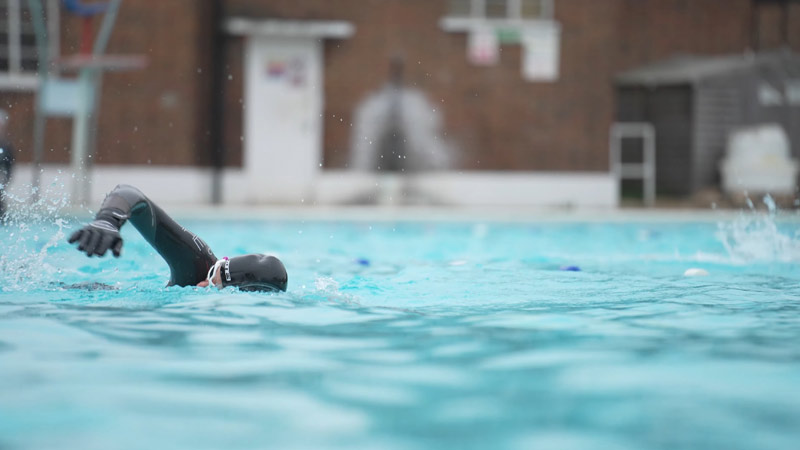
Competitive swimming pools are often regulated by national and international standards that set guidelines for water temperature.
These standards are established to ensure fairness and consistency in competitions. For example, USA Swimming recommends a water temperature range of 77-82°F (25-28°C) for competition.
Preventing Overheating
Competitive swimmers engage in high-intensity physical activity, and the cooler water helps prevent overheating during rigorous training sessions or competitions.
Cooler water helps dissipate the heat generated by the swimmers’ bodies, allowing them to maintain a lower core temperature.
Aerodynamic Advantage
Cooler water can contribute to better body positioning and reduced drag for swimmers. Warmer water tends to be less dense, which can affect a swimmer’s ability to move efficiently through the water.
The slightly cooler temperature in competitive pools provides an environment that is conducive to optimal performance.
Stimulating Alertness and Focus
Lower water temperatures are believed to help keep swimmers alert and focused. Cold water can have a stimulating effect on the nervous system, promoting mental sharpness and heightened concentration during races or training.
Compliance with Athlete Preferences
Many competitive swimmers are accustomed to training and competing in cooler water. This familiarity allows them to adapt more easily to varying pool temperatures when participating in different events or locations.
Consistency in Performance
Maintaining consistent water temperatures in competitive pools ensures that swimmers can perform at their best, regardless of the competition venue.
This consistency helps eliminate potential distractions related to variations in water temperature.
What Does 75 Degree Water Feel Like?
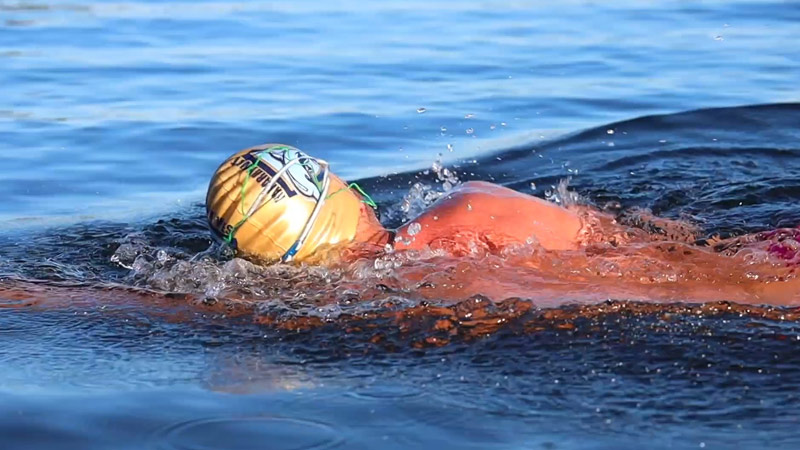
Water at 75 degrees Fahrenheit (24 degrees Celsius) typically feels cool to neutral, and the sensation can vary among individuals based on factors like personal preference, acclimatization, and the air temperature.
Here’s a general sense of how water at 75 degrees might feel:
Refreshing and Invigorating
Water at 75 degrees Fahrenheit tends to be refreshing and invigorating, particularly in warmer weather.
The temperature provides a welcome break from the heat, making it a comfortable choice for those seeking to cool down while enjoying aquatic activities.
Brief Initial Chill
Upon first entering the water, there might be a momentary sensation of coolness or a slight chill.
However, as the body adjusts to the temperature, this initial chill typically diminishes, and swimmers often find themselves acclimating quickly to the water.
Comfortable for Short Swims
Water at 75 degrees is generally considered comfortable for shorter swims or casual dips. While not as warm as tropical waters, it strikes a balance that allows for an enjoyable experience without the potential discomfort associated with colder temperatures.
Moderate Comfort for Exercise
For individuals engaging in moderate exercise, such as water aerobics or leisurely swimming, 75-degree water provides a moderate level of comfort.
It helps prevent overheating during physical activity while still offering a pleasant environment for movement and exercise.
Cooling Effect in Warm Weather
The temperature of 75-degree water has a cooling effect, making it particularly appealing on hot days. Swimmers seeking relief from warmer temperatures often find this water temperature to be ideal for both relaxation and recreation.
Variable Individual Preferences
Individual preferences for water temperature can vary widely. Some people may find 75-degree water to be perfectly comfortable, while others might perceive it as slightly cool.
Personal tolerance, previous exposure to similar temperatures, and the specific activity being undertaken all contribute to individual perceptions of comfort.
Consideration for Extended Periods
While 75-degree water is generally comfortable, it’s essential to consider the duration of the swim.
For extended periods in the water, especially in cooler weather, individuals should be mindful of their own comfort levels and take breaks as needed to avoid potential issues like hypothermia.
FAQS
What Is The Best Temp To Swim In?
The best temperature for swimming is between 78-82°F (25-28°C).
What is the current water temperature in San Diego?
For the most up-to-date information on water temperatures in San Diego, check local sources or weather websites, as temperatures can vary throughout the year.
Can you swim comfortably in 65-degree water?
Swimming in 65-degree water can be chilly, and individual comfort varies. While some may find it refreshing, others may consider it too cold for extended swims.
Is 68-degree water too cold for swimming?
Water at 68 degrees Fahrenheit may feel cool, and suitability depends on personal preference and the type of swimming activity.
While some may find it comfortable, others might opt for slightly warmer water.
At what temperature does water feel warm?
The perception of warm water varies among individuals. Generally, water temperatures around 78-82°F are considered warm, but personal preferences and acclimatization play a significant role in how water feels to each person.
Wrap Up
Determining the ideal water temperature for swimming is a nuanced consideration, influenced by individual preferences, activity type, and health factors.
The consensus often falls within the range of 77-82°F, striking a balance between comfort and versatility.
This temperature spectrum caters to both recreational swimmers and fitness enthusiasts, providing an environment conducive to enjoyable and safe aquatic experiences.
Whether seeking therapeutic benefits, engaging in leisurely swims, or participating in competitive events, the notion of an ideal water temperature remains subjective.
Adapting to personal comfort levels and being mindful of local regulations ensures a positive and satisfying swimming experience for all.

